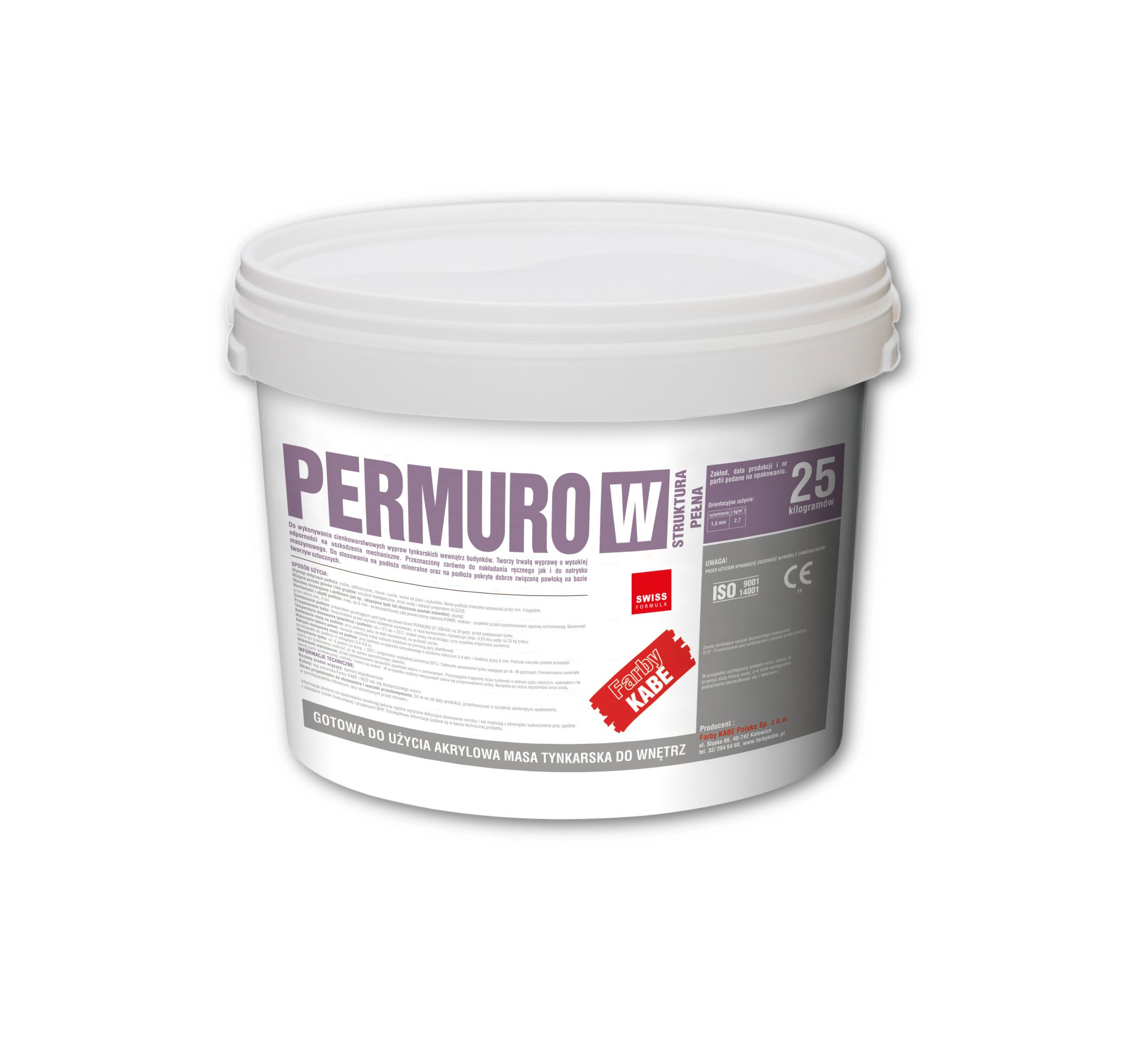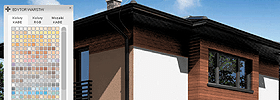PERMURO W – Acrylic plaster for interiors

It is used for manual or machine (spraying) application of thin top coats inside buildings. It is used both on mineral substrates (such as concrete, cement plaster, cement-lime plaster) and on substrates covered with well set and bound polymer-based coats. The substrate should be primed with PERMURO GT prior to applying the plaster.
| Base binder: | copolymer binder; |
| Pigments: | organic and non-organic coloured pigments; |
| Colours: | natural white and colours from the KABE colour chart and selected NCS colours or according to samples provided; |
| Textures: | solid/grained; |
| Grain size: | 1.5 mm; |
| Diluent: | water; |
| Temperature of application (air and substrate): | from +5°C to +25°C; |
| Relative humidity: | <75%; |
| Packaging: | Single-use plastic packaging of 25 kg; |
| Storage: | The product should be stored in its original sealed packaging in a cool frost-protected room. Opened packaging should be tightly closed and used as quickly as possible; |
| Shelf life: | 24 months from manufacture date placed on the packaging, for originally closed packaging. |
• Clear, uniform and decorative texture
• High impact resistance
• Wide range of colours
• Suitable for spray application
SUBSTRATE PREPARATION: Apply to a sound/stable and clean substrate (without cracks and delaminations), degreased, dry, and biological or chemical efflorescence free. In the case of fungal growth, the substrate should be mechanically cleaned and then disinfect with an indoor fungicide. Old mineral substrates should be washed with dispersed water jet. Any loose layers not bound to the substrate (i.e. loose render or flaked coatings) should be removed. If there is any large unevenness of the substrate (from 5 to 15 mm), use levelling compound and then apply the whole surface with KOMBI base coat. Minor unevenness (up to 5 mm) can be levelled out at once and smoothened with KOMBI base coat. Absorbent substrates should be primed with BUDOGRUNT WG before levelling compound and/or finishing compound application. If the acrylic plaster is applied on new mineral substrates (i.e. cement, concrete, cement-lime plaster) – a min. 4-week period of seasoning is required, while gypsum plasters after 2 weeks and the product may be applied on the so-called dry construction directly after grinding and dedusting.
PRIMING: The substrate should be primed with PERMURO GT primer before plaster application. Primer should be dry before applying a finish coat (ca. 24 h). To reduce the risk of the substrate colour showing through the top coat, it is
recommended to use a primer that is of the same colour as the plaster.
PRODUCT PREPARATION: The packaging contains a ready-to-use product. If stored for a long time and before application, the product should be thoroughly mixed with a low-speed mixer fitted with a basket stirrer until a smooth, homogenous consistency is obtained. Further mixing is not recommended as it may result in excessive aeration of the product. If required, add a small amount of clean water (max. 0.25 l per 25 kg of the product). Quantity of added water may vary depending on the substrate type, drying conditions and application method.
APPLICATION METHOD: Using a stainless steel trowel, apply a thin, uniformed quantity of the product to the substrate. The thickness of the coat should be equal to the grain size. To create texture, rub the surface with a plastic trowel in circular motions (solid/grained texture). Machine spraying: by using a spraying machine at a working pressure of 3-4 atmospheres and a nozzle diameter of 6 mm. While spraying, the gun should be held perpendicularly to the substrate at a distance of 0.4-0.6 m.
DRYING: Typical drying time ca. 6 h (20°C, 55% RH). Total hardening of the top coat takes ca. 48 hours. Note: The drying time may be longer due to low temperatures and high relative humidity. After applying the coat, closed rooms should be aired until the specific smell disappears.
USEFUL HINTS: The final effect can depend on the substrate type. For non-uniform substrates, it is recommended to apply at first the whole surface with KOMBI base coat. To avoid colour differences, a single batch product should be used on a single application / architectural element. ‘Wet on wet’ method should be used. All tools should be cleaned with water after work is completed. Avoid working in draughts and at high air humidity.


 PERMURO W - TDS
PERMURO W - TDS